With the arrival of autumn, there are no less worries in the garden. We need to have time to collect and process the remains of the harvest, plant the purchased seedlings, and prepare the garden for the coming winter.
In this article we will talk about raspberries, about what to do with raspberries in the fall. Most often, novice gardeners ask the following questions:
- How and when is the best time to plant raspberries in the fall?
- How to prune bushes correctly?
- How to transplant raspberries to a new place.
- How to prepare plants for winter.
Let's start with autumn planting raspberries.
Planting raspberries in autumn
Landing dates. The most favorable time for planting raspberries in autumn is from mid-September to mid-October. Depending on the region, these times may vary slightly. The main condition is that about a month should pass from planting raspberries to the onset of frost. This time is enough for the plants to take root and take root in the new place. Poorly rooted seedlings may not survive the winter, so planting in late autumn is risky.
When is it better to plant raspberries, autumn or spring?
It is definitely better to plant raspberries in the fall. If the rules and timing of planting are observed, the seedlings overwinter well, quickly begin to grow in the spring and are much ahead of the plants planted in the spring. And in general, caring for autumn plantings is much easier. In autumn the weather is more favorable; there is no spring heat, which greatly complicates the survival of plants after planting.
What is the difference between planting raspberries in autumn and spring?
Better survival rate of seedlings. The planting technique itself is the same in spring and autumn. The yield of your raspberry garden will depend largely on the following factors:
- Choose the raspberry variety responsibly.
- Find a suitable location.
- Conduct pre-planting preparations.
Choosing a variety is a separate topic and we will talk about it in the next article, so let’s move on to the second point.
Where to plant. Raspberries are a surprisingly unpretentious plant; they can grow anywhere, without special care, and at the same time can still produce some kind of harvest. Of course, “some kind of harvest” will not suit us, we need the branches to literally burst with ripening berries, and for this we need to take into account everything that raspberries like and don’t like.
Raspberries really do not like low, marshy places; they bear fruit poorly in the shade and when planted in dense areas. It prefers light loamy soils, well-filled with organic matter. Most often it is planted along a fence or wall of a house on the sunny side. Almost no one washes raspberries before eating, so try not to plant them near dirt roads, where there is often a lot of dust.
Requirements for planting material. The thickness of the shoots of seedlings should be about one centimeter. The root system is dense and at least 10 cm long. Thin, fibrous roots die very quickly in the sun, so dig them in as quickly as possible or at least wrap them in a wet rag.
Landing scheme. There are two main ways of planting raspberries - bush and strip. With the bush planting method, the raspberry tree will consist of bushes, each of which will have 8 - 10 shoots of different ages. The distance between bushes in row 1 is 1.2 meters, and between rows 1.5 is 2 meters.
When planting with tape, strips of raspberry stems no more than 40 cm wide are formed. The distance between plants is 40 - 50 cm, and between rows 1.5 - 2 meters.
Watch a video about how to plant raspberries so that they produce a generous harvest for many years:
How to plant raspberries in the fall
Raspberries will bear fruit for a long time and abundantly if you generously add organic matter to the ground before planting. Anyone familiar with the principles of natural farming knows what we are talking about.
At first glance, such pre-planting preparation may seem extremely complicated and time-consuming. In fact, everything is not so difficult, but in the future you can do without any fertilizing or fertilizer at all.
When planting raspberries in the fall, such preparation must begin in advance. First of all, you need to dig a trench 40 - 50 cm wide and about 40 cm deep.
Place any pieces of wood at the bottom of the trench, preferably already half-rotten. Sprinkle manure on top in a layer of seven to ten centimeters. If there is no manure, then use vegetable humus from the compost heap. If there is no compost heap, then fill it with fallen leaves, tops, and grass. All this will gradually rot and supply your raspberry garden with all the necessary nutrition. To prevent the plants from scattering from the garden bed, immediately install pieces of slate or roofing felt in the trench.
Add fertile soil on top, water well and wait until the soil settles; you may need to add more soil.
Autumn planting of raspberries
Prepare holes of such a size that the root system of the seedlings can fit freely there. Spread the roots in different directions, make sure they do not curl up and cover with soil. The root collar of plants should be at ground level or slightly below. Some novice gardeners consider the recommendations “spread the roots...” to be optional, “on duty,” but this is not at all the case. When planting any seedling, the roots must be straightened and directed downward, then it will be much easier for the plant to take root in a new place.
After finishing planting, water the seedlings well and mulch with manure (if any) or fallen leaves and straw. If you plant raspberries in the spring, then immediately after planting you need to trim the seedlings to a height of 15 - 20 cm.When planting in autumn, it is also better to prune in the spring. Any pruning provokes the growth of side shoots, and if the autumn is warm, the seedlings may have time to produce young shoots. In winter they will of course die, and this is extremely undesirable.
Of course, not everyone will be able to carry out the kind of pre-planting preparation described above. Of course, raspberries can be planted in ordinary holes, but even in this case, half a bucket of humus, 30 grams, should be added to the holes. superphosphate and 20 gr. potassium salt. Nitrogen fertilizers, such as urea or saltpeter, are not recommended for use when planting raspberries.
The most common mistake when planting raspberries is thick planting.
Pruning raspberries in autumn
Pruning of remontant raspberries and regular raspberries is carried out differently. To be precise, ordinary raspberries are not pruned in the fall. It is pruned in the summer, immediately after harvesting.
The raspberry bush consists of shoots from the previous year and young shoots that grew this year. The harvest is formed on the shoots of the previous year; these shoots must be cut out immediately after harvesting. This cannot be delayed, because it interferes with the development of young plants, which should receive a lot of light and sun.
Along with cutting out the old shoots that are beginning to dry out, the remaining young shoots are also rationed. First of all, remove the weak, underdeveloped ones, and from the strong ones, select and leave 4 - 5 of the most powerful shoots in each bush. Do not feel sorry for them, because in the spring new shoots will begin to grow and in the summer there will no longer be 4-5, but 8-10 shoots in the bushes.
If for some reason you did not prune in the summer, you will have to prune the raspberries in the fall, but next year try to do everything on time.
Pruning raspberries in autumn video:
Pruning remontant raspberries in autumn
Remontant raspberries can be grown in two ways:
- For two harvests. The first harvest ripens at the end of June - July, and the second from the beginning of September until frost.
- For one harvest. This harvest ripens from the end of August and also continues until frost.
These are, of course, very approximate dates, which may vary depending on the region and raspberry variety. Each of these methods has its own advantages and disadvantages, which gardeners have been arguing about for many years.
Using the first method, you will eat raspberries almost all summer, but the plants will be somewhat more susceptible to diseases and pests.
By choosing the second option, you will receive one autumn, very abundant harvest, which in weight is comparable to the two harvests obtained with the first method of cultivation. Try both of these methods and decide for yourself which one is better.
Now let’s talk about autumn pruning, because with the methods described above, raspberries are pruned in different ways.
Pruning remontant raspberries video:
Pruning raspberries when growing for two harvests
For remontant raspberries, the harvest is formed both on the shoots of the previous year and on young shoots grown this year, so it is possible to harvest two harvests from it in one year. Pruning remontant raspberries grown for two harvests is very similar to pruning regular raspberries.
Likewise, after harvesting the summer harvest, fruit-bearing shoots must be cut out immediately. This is usually done at the end of July or beginning of August. The remaining young shoots are already gaining color at this time, and in early September the berries on them are already beginning to ripen.
The entire autumn harvest will be concentrated on the top of the shoots.After harvesting, it is this panicle with the remaining dry inflorescences that needs to be trimmed. This is where the autumn pruning of remontant raspberries actually ends. All that remains is to bend the shoots to the ground so that they do not freeze in winter.
Many gardeners, when growing ordinary raspberries, cut off the tops in June so that side shoots can grow. In remontant raspberries, you cannot cut off the tops in summer, otherwise you will destroy part of the crop that is formed on the upper third of the shoot.
Autumn pruning of remontant raspberries when grown for one harvest
If you decide to grow remontant raspberries for one autumn harvest, then there is no need to save the shoots of the previous year. In late autumn, simply cut off absolutely all the shoots right down to the ground, but do this only in late autumn, preferably even in frosty weather. If you prune the shoots when it is still warm, then after pruning young shoots will begin to grow, which will certainly die in winter.
In the spring, young shoots will appear from the ground, there will be a lot of them, but you can’t leave them all. For each bush, leave 3 - 4 of the largest shoots, remove the rest. Once again I would like to remind you that the most common and widespread mistake when growing raspberries is thickened plantings. Modern raspberry varieties produce very large yields, but only if the bushes are well illuminated.
At the end of August, the berries will begin to ripen, and after harvesting, in late autumn, cut your raspberry tree back to the ground again, and so on from year to year. In winter, the beds with such raspberries are bare, only the stumps stick out.
Transplanting raspberries in autumn
Most often, gardeners are interested in the question: when is the best time to replant raspberries in the fall?
Autumn transplanting of raspberries to a new place (as well as planting raspberries in the fall) works best from mid-September to mid-October.
Raspberries are transplanted to a new place, as a rule, in two cases:
- If she was planted in the wrong place and she suddenly began to interfere.
- Raspberries grew in one place for a long time, yields began to fall and the raspberry tree needs to be replanted to rejuvenate the plantation.
This clarification had to be made, because raspberries are transplanted in these two cases somewhat differently.
If a year or two after planting it turns out that the raspberries were planted “in the wrong place,” then the young bushes are carefully dug up, trying not to damage the roots, and moved to a new place. The new place should already be carefully prepared by that time.
If raspberries are replanted to rejuvenate the raspberry tree, then the old bushes are uprooted and thrown away; they will no longer be of any use. Young, strong shoots are chosen for planting in a new place. The best time to replant is in the fall. The technology for transplanting raspberries is no different from planting.
To rejuvenate a plantation, replanting is the most effective method. The reason is clear: in a new place you can safely prepare trenches or planting holes, fill them with organic matter and fertilizers. Unfortunately, not everyone has the opportunity to move the raspberry garden to a new place from time to time.
You can rejuvenate raspberries without replanting them. To do this, the old rhizome is simply cut down with a shovel, and young shoots will begin to grow from the roots remaining in the ground. It is from this growth that new bushes are formed.
How to bend raspberries for the winter
Most often, the tops of raspberry branches freeze. To prevent this from happening, the bushes must be bent to the ground.Of course, it won’t be possible to lay the shoots on the ground; they will simply break, and this is not necessary. It is enough to bend the stems in an arc and tie them to the bottom of the neighboring bush. The photo clearly shows what it looks like. The shoots should be bent to the ground before frost sets in, otherwise they will freeze and become brittle.
In winter, it is advisable to cover the raspberry tree with snow, but this must be done in frosty weather, when the snow is soft and fluffy. If you cover bent bushes with wet, heavy snow, you can break them. Raspberries covered with snow always overwinter very well.
Detailed description of popular raspberry varieties:
We also recommend reading:
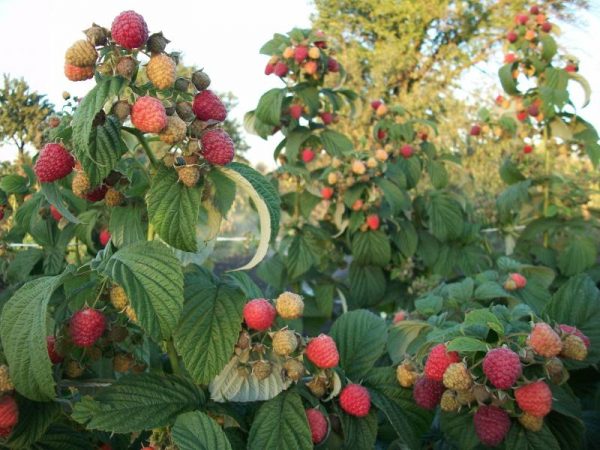
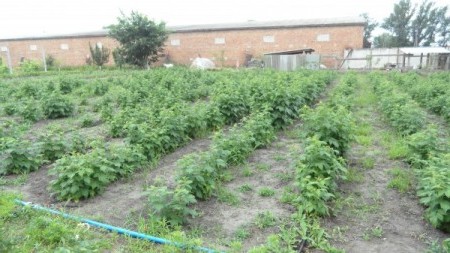
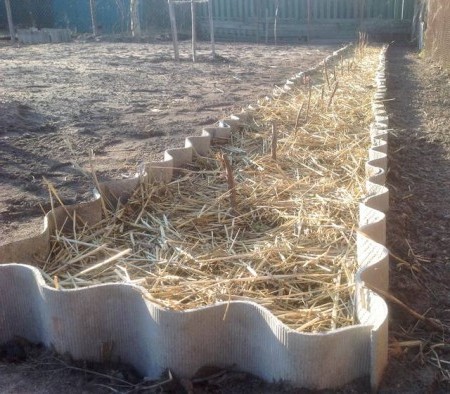
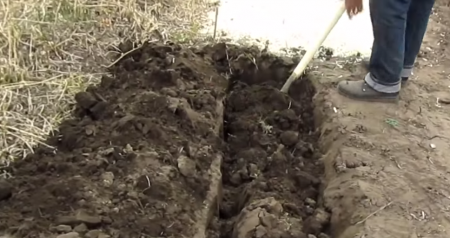
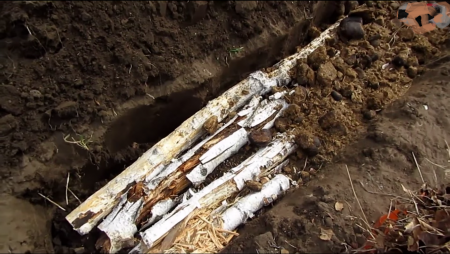
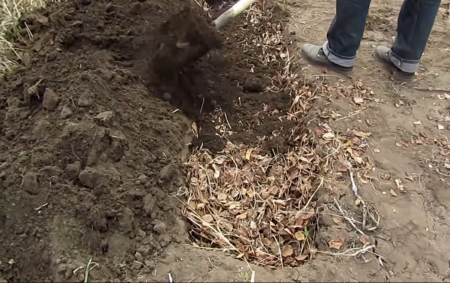
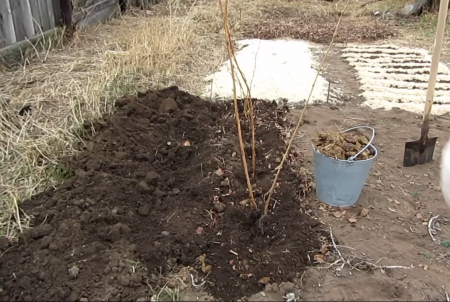
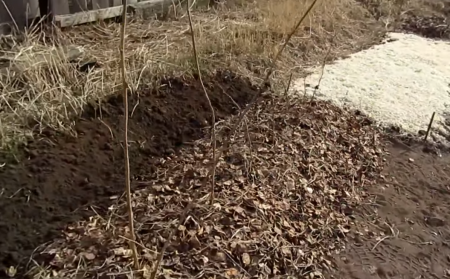
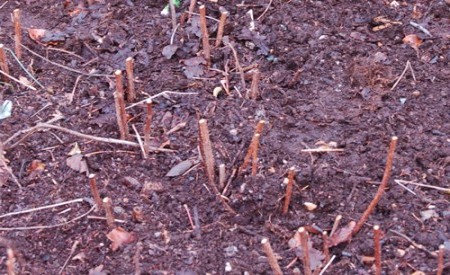
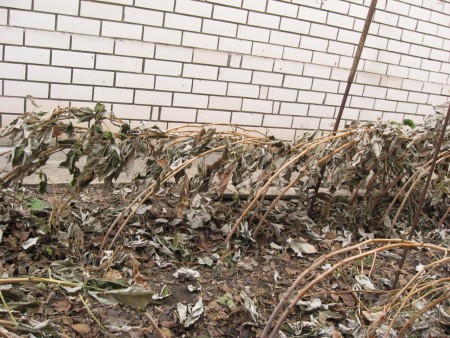

 (20 ratings, average: 4,15 out of 5)
(20 ratings, average: 4,15 out of 5) CUCUMBERS NEVER GET SICK, I'VE BEEN USING ONLY THIS FOR 40 YEARS! I SHARE A SECRET WITH YOU, CUCUMBERS ARE LIKE THE PICTURE!
CUCUMBERS NEVER GET SICK, I'VE BEEN USING ONLY THIS FOR 40 YEARS! I SHARE A SECRET WITH YOU, CUCUMBERS ARE LIKE THE PICTURE! You can dig a bucket of potatoes from each bush. Do you think these are fairy tales? Watch the video
You can dig a bucket of potatoes from each bush. Do you think these are fairy tales? Watch the video
 How our fellow gardeners work in Korea.There is a lot to learn and just fun to watch.
How our fellow gardeners work in Korea.There is a lot to learn and just fun to watch. Eye trainer. The author claims that with daily viewing, vision is restored. They don't charge money for views.
Eye trainer. The author claims that with daily viewing, vision is restored. They don't charge money for views. A 3-ingredient cake recipe in 30 minutes is better than Napoleon. Simple and very tasty.
A 3-ingredient cake recipe in 30 minutes is better than Napoleon. Simple and very tasty. Therapeutic exercises for cervical osteochondrosis. A complete set of exercises.
Therapeutic exercises for cervical osteochondrosis. A complete set of exercises. Which indoor plants match your zodiac sign?
Which indoor plants match your zodiac sign? What about them? Excursion to German dachas.
What about them? Excursion to German dachas.